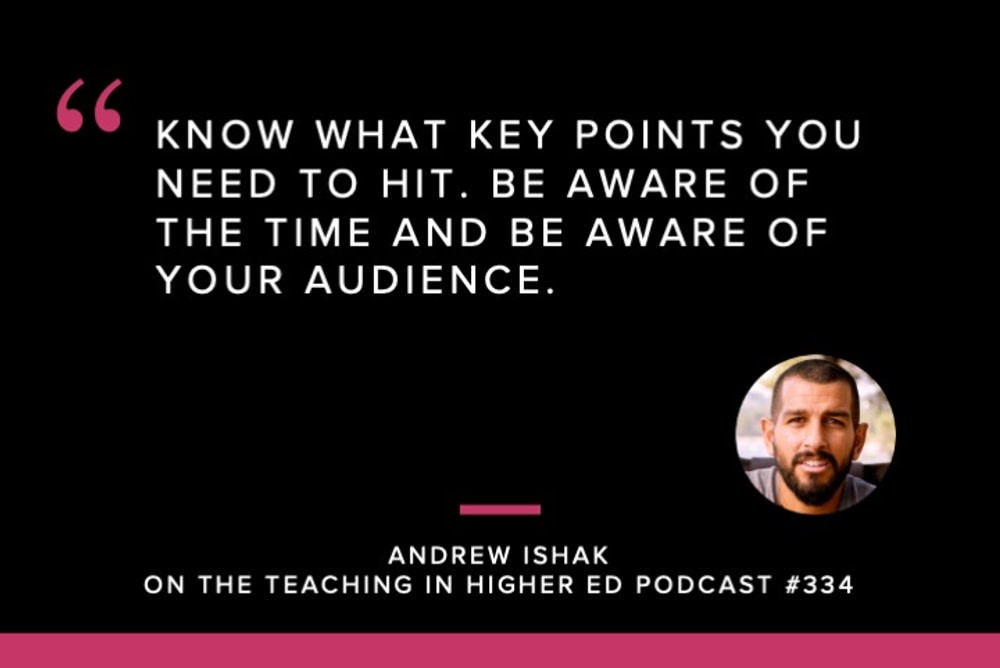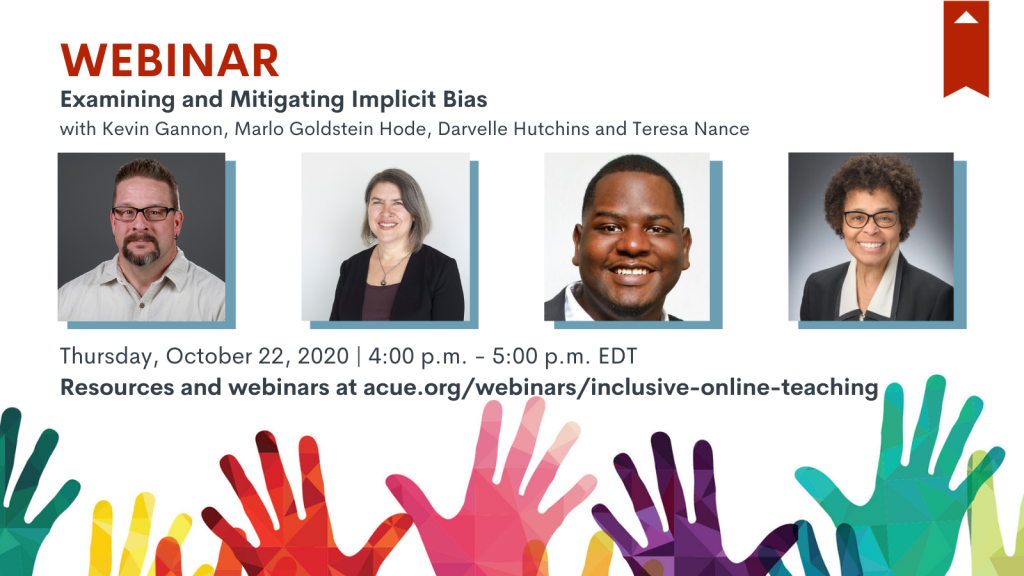



“We call ourselves the American Dream Machine,” Dr. Félix V. Matos Rodríguez, chancellor of the City University of New York (CUNY) said in the October 2, 2020 “Conversation on Student Success” part of the series produced by ACUE and the American Council on Education (ACE). Sherri Hughes, assistant vice president of professional learning at ACE, hosted the conversation.
Rodríguez, who first came to the CUNY system in 2000 as a faculty member, explained that many CUNY students come from minority, low-income, and/or first-generation backgrounds. When the COVID-19 pandemic disrupted higher education, the system was tasked not only with transitioning nearly 50,000 course sections to an online format, but also equipping students with the tools they need to continue their learning, such as computers and hotspots.
“We couldn’t leave anybody behind,” Matos Rodríguez said.
Since the beginning of the global crisis, Matos Rodríguez and CUNY have learned a lot of lessons. Pedagogy has always been a key strategic priority for the leader, and it has become all the more central in light of new challenges and already existing inequities.
Educators take pride in their teaching and are an integral part of building a culture of instructional excellence.
“Everybody is really proud of their teaching,” Matos Rodríguez said.
Matos Rodríguez noted that there’s a lot of skepticism about higher education right now, and the public needs to see that educators are serious about their teaching. This, he explained, will not only help an institution’s — and the entire industry’s — brand but also help students navigate career prospects.
“The focus on better teaching and better pedagogy is the right thing to do…and helps our students when they pursue jobs to advance as professionals,” he said.
Many faculty, he added, are eager to introduce students to career possibilities and help them create networks and build skills, work that can be integrated into courses.
Because faculty are central to institutional pedagogical efforts, Matos Rodríguez believes that they must be part of the conversation about how to improve them. At CUNY, faculty are asked about successful initiatives and how the process can be improved going forward.
“Faculty want students to feel the same passion for the work they do,” Matos Rodríguez opined.
Given support, faculty can not only adapt but also thrive.
CUNY is investing in its faculty, offering numerous opportunities for instructors to improve their teaching, especially in an online environment.
“All faculty want to teach better. Many of us just don’t get the training. Faculty are thankful for the opportunity to learn how to teach online,” Matos Rodríguez said. “They’re discovering aspects of online teaching they’re enjoying.”
He added that they also have more empathy and sensitivity to the situations students are experiencing having to learn from home.
“One of the positive things about the pandemic is more interest in pedagogy and teaching,” Matos Rodríguez said. “Faculty are challenging us to do more and dig deeper.”
Matos Rodríguez also emphasized the significant role that philanthropic partnerships play in catalyzing change across higher education. The Mellon Foundation, Carnegie Corporation of New York, and the Charles Koch Foundation — through a National Association of System Heads initiative — have all invested in CUNY to support student success through quality teaching.
Good teaching improves the community.
“One of the great prides I have being a CUNY family member is that we are an indispensable anchoring institution in New York City,” Matos Rodríguez said.
As an important institution in the city that was formerly the epicenter of the COVID-19 pandemic, he believes CUNY has a responsibility — and ability — to help New York recover. He pointed to the fact that the city now has a higher unemployment rate as a result of the stress to the economy, with many students who previously work in industries like hospitality now out of jobs.
“We can help rebuild the city in an equitable way,” Matos Rodríguez said, citing courses, training, partnerships, and other opportunities as ways of helping New York. “This is one of the reasons CUNY was created.”
The pandemic offers pedagogical lessons for the future.
Going forward, Matos Rodríguez hopes we don’t lose the lessons we’ve learned going forward — empathy and humility for one.
“I pray that we keep that human side and integrate it into the new normal,” he said. “That will make us far better educators and people and will make for a far better country.”
Matos Rodríguez also advised colleagues to use data gathered during this unprecedented period and think about how they can use it to innovate. CUNY, for example, has data from its partnership with ACUE that the system plans to use to show others how transformational it has been. Data can also be used to better support faculty.
“If we invest in our most important asset, faculty, we’ll get faculty that are happier and more motivated, and we’ll achieve better outcomes,” Matos Rodríguez said.
CUNY, for one, found a way to thrive in spite of obstacles: the system graduated over 56,000 students at the end of a tumultuous semester, sustaining a decade-long upward trend.

“As human beings, we’re not fond of ambiguity,” said Theresa Nance, PhD, vice president for diversity and inclusion and chief diversity officer at Villanova University, as she opened a mid-October conversation on Examining and Mitigating Implicit Bias, the latest in ACUE’s series of Inclusive Online Teaching webinars. “We fill in gaps with our knowledge and our understanding.”
The webinar also featured panelists Kevin Gannon, PhD, director of the Center for Excellence in Teaching and Learning (CETL) and professor of history, Grand View University; Marlo Goldstein Hode, PhD, senior manager, strategic diversity initiatives, Office of Diversity, Equity and Inclusion, University of Missouri-St. Louis; and Darvelle Hutchins, lecturer, Department of Communications Studies, California Polytechnic State University and Diversity Strategist, TDS Telecommunications, Inc. The panel shared practices to set expectations for valuing diverse viewpoints, facilitate respectful conversations, and engage students in inclusive active learning exercises.
We all have biases.
“Everyone has them,” Goldstein Hode added. “These are cognitive shortcuts to categorize information very quickly.” She noted that these are involuntary thoughts that might conflict with our conscious thoughts — and we need to recognize that we have biases and be cognizant of situations where they could come into play.
“Take a step back, ask questions, and seek out new information,” she said.
“We all have biases,” Hutchins agreed. “I think it’s important to remember that as educators, we’re not exempt from that.”
He revealed some biases he had when he was a new educator. For example, he believed that seniors were more prepared for complex courses than freshmen and engineering students were more analytical thinkers than those studying the arts and humanities — biases that were quickly challenged through his work.
Gannon, meanwhile, urged educators to read Stephen Brookfield’s Becoming a Critically Reflective Teacher. This book, he said, provides an excellent framing model for being a critical pedagogue. He also urged instructors to embrace a “radical ethic of transparency.”
We must be able to admit when we’re wrong.
“Intent does not equal impact,” said Nance. “[We must] become comfortable with admitting we don’t know — or we’re wrong.”
In fact, Goldstein Hode noted, you can only be effective if you’re aware you have that bias. “You have to care — have intrinsic motivation to want to challenge these biases. [It involves] developing a chronic awareness of bias.”
“Are you paying attention to the story that surrounds [actions]?” Gannon asked, noting that it’s essential to make sure students aren’t being targeted in inequitable ways.
Addressing unconscious bias is an ongoing process.
“How can I continue to work to keep myself accountable to make sure everyone has an equal experience, even when it comes to grading?” Hutchins wondered. “How can we best position ourselves to work through that, be more inclusive, and provide a safe and equitable student experience?”
In effort to continue the process of addressing and mitigating bias, he, for example, aims to be very clear about his expectations and continually refers back to a rubric he’s created to ensure he’s being just and fair.
This is particularly important during COVID, Gannon said, when so much has been moved online.
“I try to be as transparent and explicit as I can with my students,” he said.
As part of this work, Gannon advocates using the Transparency in Learning and Teaching (TILT) framework. “It offers me a way to present tasks to my students by presenting a framework and takes away the anxiety of students who have not been asked to do a task before.” Additionally, he added, it “helps me expose and unpack my assumptions about what students can and can’t do and what I’ve internalized.”
“As faculty members, we all have a responsibility to maintain justice in the classroom,” Nance opined. “If we’re not doing it, then we’re not doing our jobs.”
She advocated using strategies like being more purposeful when forming groups and considering what different personalities would add. She also advises faculty to be explicit when addressing bias, all while acknowledging that “We’re never finished. We have to keep reading, talking, learning.”
Goldstein Hode suggested having students fill in a survey about what they can bring to a group to form one that would harness diverse skills.
At the end of the day, Goldstein Hode said, “Neural paths can be overridden but not overwritten. We can actively choose to act otherwise. [This is] ongoing work.”
Hutchins added that students have biases, too, and educators must work with students to help them consciously face them. “Work to bring to light that bias,” he said. “Post research. Post statistics so students can check their own biases. Be flexible.”
Watch the full webinar and access resources.
This webinar was presented in collaboration with the American Association of State Colleges and Universities (AASCU), the American Council on Education (ACE), the Association of Public & Land-Grant Universities (APLU), The Council of Independent Colleges (CIC), Every Learner Everywhere (ELE), the National Association of System Heads (NASH), and Strong Start to Finish (SSTF).